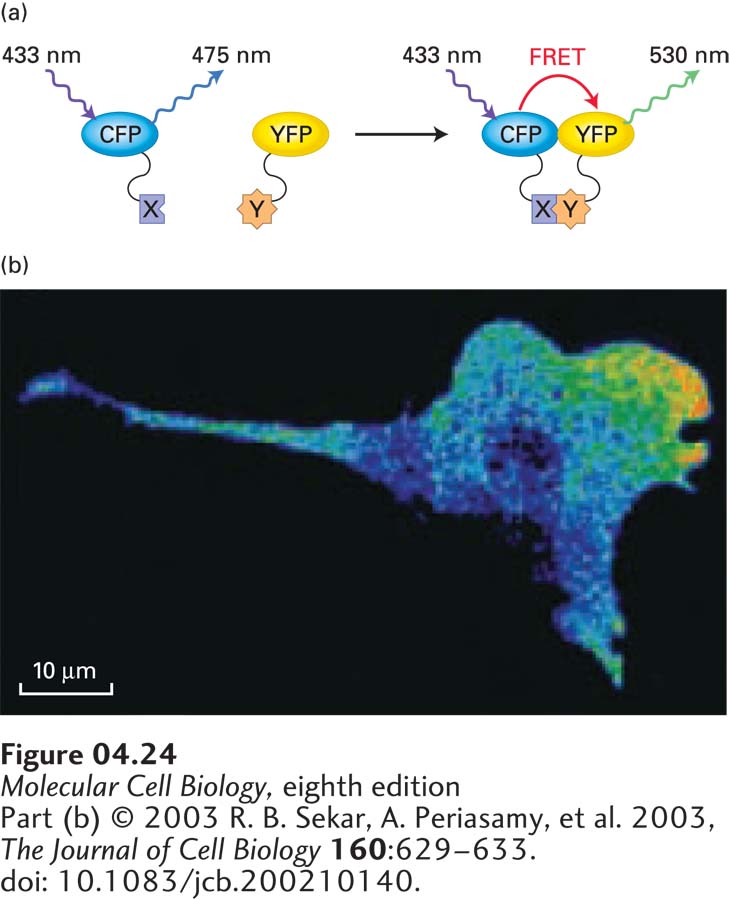
FIGURE 4- 24 Protein- protein interactions can be visualized by FRET. The idea behind FRET is to use two different fluorescent proteins so that when one is excited, energy will be transferred to the second one by FRET, provided that they are sufficiently close. (a) In this example, cyan fluorescent protein (CFP) is fused to protein X, yellow fluorescent protein (YFP) is fused to protein Y, and both proteins are expressed in a live cell. If the cell is now illuminated with 433- nm light, the CFP will emit a fluorescent signal at 475 nm. If YFP is not close by (left), energy transfer will not occur, and no 530- nm light will be emitted. However, if protein X interacts with protein Y (right), it will bring CFP close to YFP, energy will be transferred to YFP by FRET, and YFP will emit light at 530 nm. (b) In this mouse fibroblast, FRET has been used to reveal that the interaction between an active regulatory protein (Rac) and its binding partner is localized to the front of the migrating cell.
[Part (b) © 2003 R. B. Sekar, A. Periasamy, et al. 2003, The Journal of Cell Biology 160:629– 633. doi: 10.1083/jcb.200210140.]
[Leave] [Close]